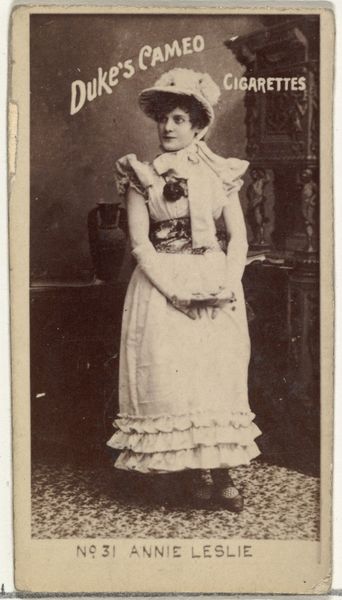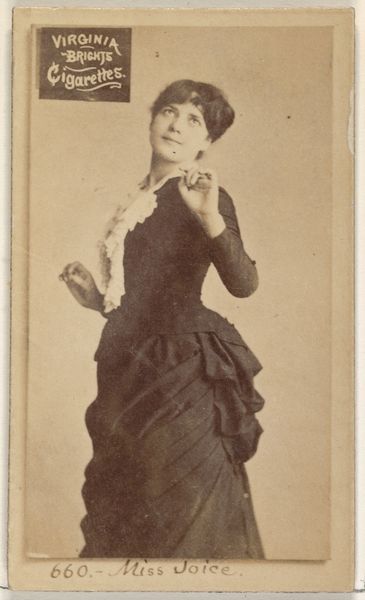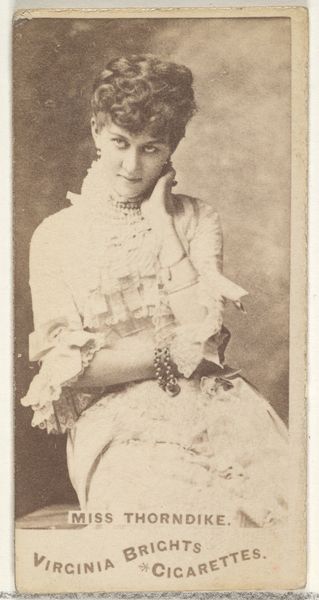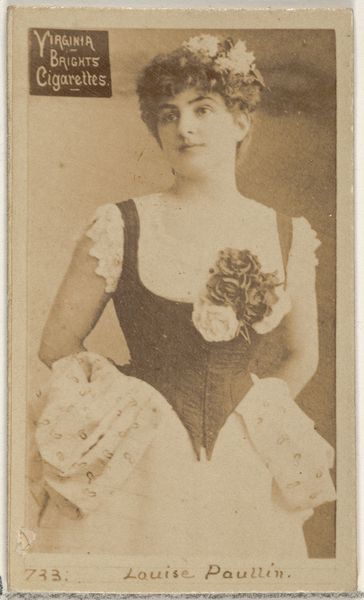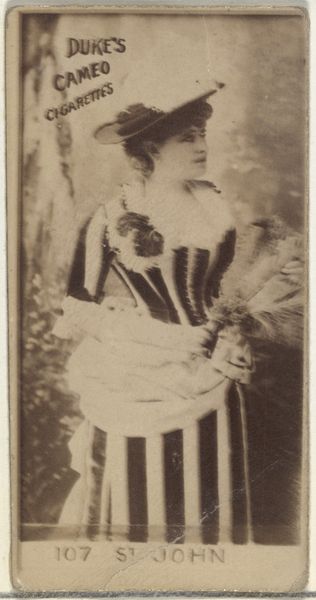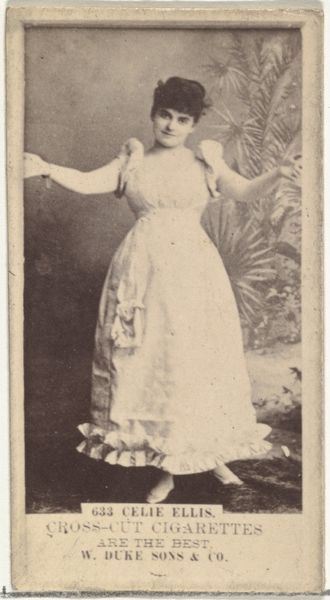
Mlle. Cadwell, from the Actors and Actresses series (N45, Type 1) for Virginia Brights Cigarettes 1885 - 1891
0:00
0:00
Dimensions: Sheet: 2 3/4 x 1 3/8 in. (7 x 3.5 cm)
Copyright: Public Domain
Editor: So, this is "Mlle. Cadwell," a print from around 1885-1891 by Allen & Ginter, part of an "Actors and Actresses" series made for Virginia Brights Cigarettes. It's fascinating to see photography used this way. What stands out to you when you look at it? Curator: Immediately, the cigarette advertisement strikes me. The mass production of these cards for promotional purposes democratizes art but simultaneously commodifies it. This blurring of high art and commercial enterprise is very telling of the period. How does it sit with you that this portrait's primary function was to sell cigarettes? Editor: I never really thought about that side of it. Does the means of production affect the status of the art itself? Curator: Absolutely. The shift from handcrafted portraits to mass-produced images impacts our perception of value and authenticity. Consider the materials: a simple card, easily reproduced. This isn't about unique artistry in the traditional sense; it’s about marketing and distribution, reflecting a rapidly industrializing society and growing consumerism. Editor: So, it's less about the artistic skill and more about how it functions within the economy? Curator: Precisely! The labor involved in producing and distributing these cards, the economic structures that enabled their creation, and the way they were consumed – these are central to understanding the work's significance. Think about the tobacco industry at the time. What does it mean to represent this actress promoting this industry? Editor: It definitely provides a fresh perspective, understanding art not just as an aesthetic object but as a product of its time and circumstances. Curator: Exactly. Focusing on materiality and consumption reshapes our understanding of art history, inviting critical discussions.
Comments
No comments
Be the first to comment and join the conversation on the ultimate creative platform.


